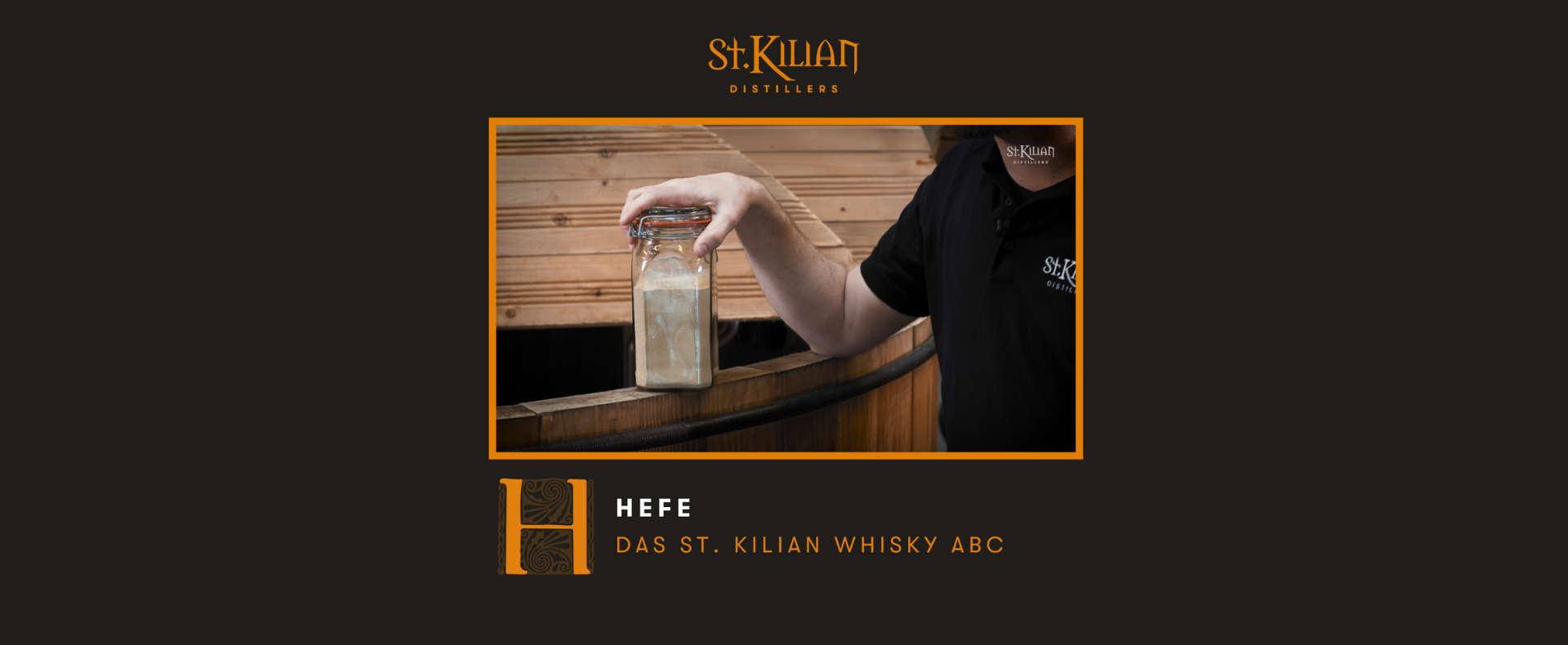H - like yeast

How important is yeast for whisky production?
Yeast performs an extremely important job in the production of whiskey. As it metabolizes various sugars and amino acids in the wort, it gains energy to grow and divide. In the process, each yeast cell secretes various substances, such as ethanol (potable alcohol), carbon dioxide (CO2), and an enormous variety of different aroma and flavor compounds (e.g., fruity esters), some of which we later find in the aged whiskey.
What is yeast?
Yeast belongs to the class of tubular fungi (ascomycetes), which is one of the large divisions in the kingdom of fungi. Yeasts are unicellular organisms, i.e. they consist of only one cell. The most common yeast used in the fermentation of beer, wine and whiskey is Saccharomyces cerevisiae.
What does Saccharomyces cerevisiae mean?
The Latin names of microbes are chosen to provide information about the function of the organisms. The yeast name is derived from "saccaro" (meaning sugar), "myces" (meaning fungus) and "cerevisiae" (meaning beer). Compounded, you get "sugar fungus of beer".
Which yeast strain is used?
At St. Kilian Distillers, we rely on the traditional whisky yeast strain M1, which is also used in many distilleries in Scotland. We use this strain as dry yeast. This top-fermented dry yeast is delivered to us in Rüdenau as free-flowing granules packed in a protective atmosphere in 10 kg bags. In addition to dry yeast, there are other variants - compressed yeast (pressed form) and cream yeast (liquid slurry).
What are the advantages of dry yeast?
Dry yeast has the decisive advantage that it is very stable at room temperature and therefore does not require refrigerated storage. With additional cooling (4-8°C), on the other hand, it can even be stored for up to two years. It also delivers consistent quality and can be conveniently stocked in the handy pouches. The liquid cream yeast often used in Scotland, which is delivered fresh in tanks by truck, is virtually not used in German distilleries due to a lack of infrastructure.
How fast does the yeast produce ethanol?
The yeast can convert an enormous amount of wort into alcohol within a very short time. In our case, alcoholic fermentation takes about 65 hours in the wooden washbacks. In this time, the yeast has converted 10,800 liters of sugary wort into a beer, called wash, with an ethanol content of 8 percent by volume. Since many beer yeasts do not have such an alcohol tolerance, we rely on the M1 whiskey yeast for fermentation.
Are other yeast strains also used?
We at St. Kilian Distillers are considered to be extremely experimental. In the early stages of our production, we tried a number of different yeasts - such as vodka yeast, bourbon yeast, or grain yeast - but only the whisky yeast M1 convinced us in terms of the desired aroma and fruitiness. This is not a big surprise, as M1 is traditionally the most widely used yeast strain in Scottish distilleries. Therefore, we rather focus our experimentation on different malt blends and a wide variety of barrel sizes and types, and stick to the M1 yeast strain.
How important is yeast?
The yeast has a very strong influence on the character of our New Make Spirit and later whisky. This is because the origin of many aromas that we find in the matured whiskey after years of barrel aging stems from the process step of alcoholic fermentation. The use of M1 whiskey yeast in conjunction with an optimal fermentation temperature of 31.5°C to 32.0°C provides the wonderful fruity aromas of apple and pear in our New Make and represents the distillery character of St. Kilian. This recognition value in our spirits and whiskies is enormously important to us and is therefore very close to our hearts.